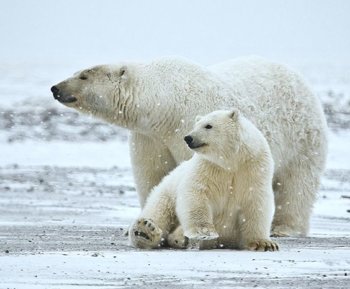 The Obama Administration this week designated more than 187,000 square miles along the north coast of Alaska as “critical habitat” for the polar bear, safeguarding under the Endangered Species Act lands and waters in the U.S. that are vital to the polar bears’ survival.
The Obama Administration this week designated more than 187,000 square miles along the north coast of Alaska as “critical habitat” for the polar bear, safeguarding under the Endangered Species Act lands and waters in the U.S. that are vital to the polar bears’ survival.
The habitat rule comes in response to an ongoing lawsuit brought by the Center for Biological Diversity, the Natural Resources Defense Council and Greenpeace against the Department of the Interior on behalf of the threatened species. Under current law, federal agencies are prohibited from taking any actions that may harm or damage critical habitat. The new designation would likely add restrictions to any future offshore drilling for oil and gas.
“The critical habitat designation clearly identifies the areas that need to be protected if the polar bear is to survive in a rapidly melting Arctic,” said Brendan Cummings, senior counsel with the Center for Biological Diversity.
“Polar bears are slipping away,” said Andrew Wetzler, Director of NRDC’s Land and Wildlife Program. “But we know that there are crucial protections that can keep them around. Today’s designation is a start, especially in warding off ill-considered oil and gas development in America’s most important polar bear habitat.”
Scientists have made it clear that polar bears need help soon. Global warming is melting the sea ice the bears depend on to hunt, mate and raise cubs. If current greenhouse gas trends continue, scientists predict two-thirds of the world’s polar bears — including all the bears in Alaska — will probably be gone in 40 years and possibly well before then.
In May 2008, the Interior Department listed the polar bear as a threatened species under the Endangered Species Act. In the ongoing lawsuit, environmentalists are insisting the government link greenhouse gas emissions with habitat protection, which would force stricter action on carbon caps.
Photo via Naturespicsonline.com by Alan Wilson-CC license



















